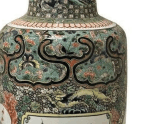In the early eighties, the origins of clay were simple: it came in two colors and was available in rectangular, 25-pound bags. In the late eighties and in the early nineties, clay came in multiple 50 to 100 pound bags of dry material and you had to mix it all together in a Soldner Mixer. When I started traveling the world as a resident artist, I found that digging my own clay and processing it was as enlightening as making new work on, and from, foreign soil.
After losing my studio practice, I began slowly rebuilding a way to continue working in clay without having any financial resources. I felt that I could start again, but I also felt that I




